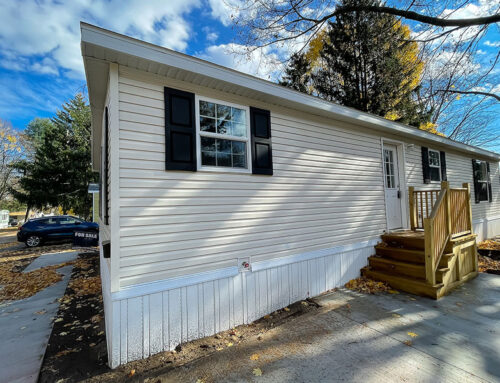A question I sometimes hear from new investors is, “What’s a good cap rate?” It’s an important consideration when buying income-producing properties, to be sure. The expenses to hold a property—utilities, maintenance, management fees, and more—can vary widely between different investment properties and directly affect the end-value for investors. Understanding cap rates can help you evaluate and compare the value of New York investment opportunities. Let’s start from the top and take a look at what a cap rate actually means, and what you might discuss with your financial advisor.
What is a Cap Rate and How Do I Calculate It?
A property’s capitalization rate is the most common metric for measuring the value of an income-producing real estate investment. Simply put, it’s a calculation of the returns the property will produce, or net annual income (NOI) in relation to its operational costs. To determine a property’s cap rate, you divide the NOI (after expenses!) by the market value. It’s important to do this calculation using the fair market price for the property—not what you actually paid for it, because any renovations or improvements you do will affect the market value and, subsequently, the cap rate.
Let’s say, for instance, that you purchase a distressed property that needs some work. Its fair market value after renovations is $500,000. It’s a single-family residence that can be leased out for $4,000 per month. For simplicity’s sake, let’s go with the “50% Rule of Thumb,” which states that all your operating costs—including your mortgage—should equal half your rental income.
24,000 (Net Operating Income) / 500,000 (Market Value) = 4.8% Cap Rate
Generally speaking, a low cap rate represents a low level of risk, while a high cap rate implies more risk. Every investor is challenged to decide what risk-adjusted return is appropriate for their own business goals, and they can do so with the help of their professional financial advisors. There are three primary factors to consider:
Location.
You’ve heard it from your agent: “Location is everything!” In New York, you’ll want to consider the market demand for both the city as a whole and the particular borough or neighborhood of your property. Demand for particular properties in New York can also vary according to whether there’s access to prime amenities, like Central Park or even just convenient public transportation.
Other factors that affect real estate demand include local employment rates, median household income, and education levels. For instance, Manhattan may have a lower cap rate based on market fundamentals that include a large, relatively wealthy and educated population.
Asset Type.
Different asset classes are viewed as having particular associated risks. Multi-family properties hold the lowest cap rate among residential property holdings because even in an economic downturn when people cannot afford to buy or rent a single-family home, they will still need a place to live. Multi-unit properties generate income from multiple sources. It doesn’t hurt the wallet too much if one tenant doesn’t pay on time, since that revenue represents only a small percentage of the overall income. That said, even in New York we recently saw a slump in the multi-family market following the so-called “Trump bump.”’
Interest rates.
Even when there’s no change to the property or the surrounding area, a property’s cap rate can vary because the cost of money is always in flux. Interest rates can increase or decrease the cost of mortgage capital, capital flows, as well as supply and demand. We see this when interest rate hikes cause the cost of buying real estate to go up and people begin to rent more frequently. With the recent increase in interest rates by the Feds, and with more hikes to be expected, opinions are divided on how this, in turn, will affect the cap rate of your New York investment property.
Regardless of the rate of return you are aiming for, if you purchase an income-producing real estate asset and carefully consider the property’s cap rate, you will be better positioned to achieve a higher return on your investment.
Looking at the Bigger Picture
Savvy investors are willing to ask hard questions to ensure that the potential returns align with the level of risk associated with any real estate investment. Evaluating your investment property’s cap rate is only one of many factors that you should consider when buying residential real estate. HomeVestors® franchisees have the tools and resources to assess a potential opportunity from multiple angles, including finding the best distressed real estate deals, planning how much renovations or home improvements will cost, and finding buyers when you are ready to exit. If you are new to real estate investing, having the support of HomeVestors®’ well-known national brand, “We Buy Ugly Houses®,” can help provide peace of mind as you grow your business. Feel free to reach out for more information today.
Each franchise office is independently owned and operated.
Contact
"*" indicates required fields





